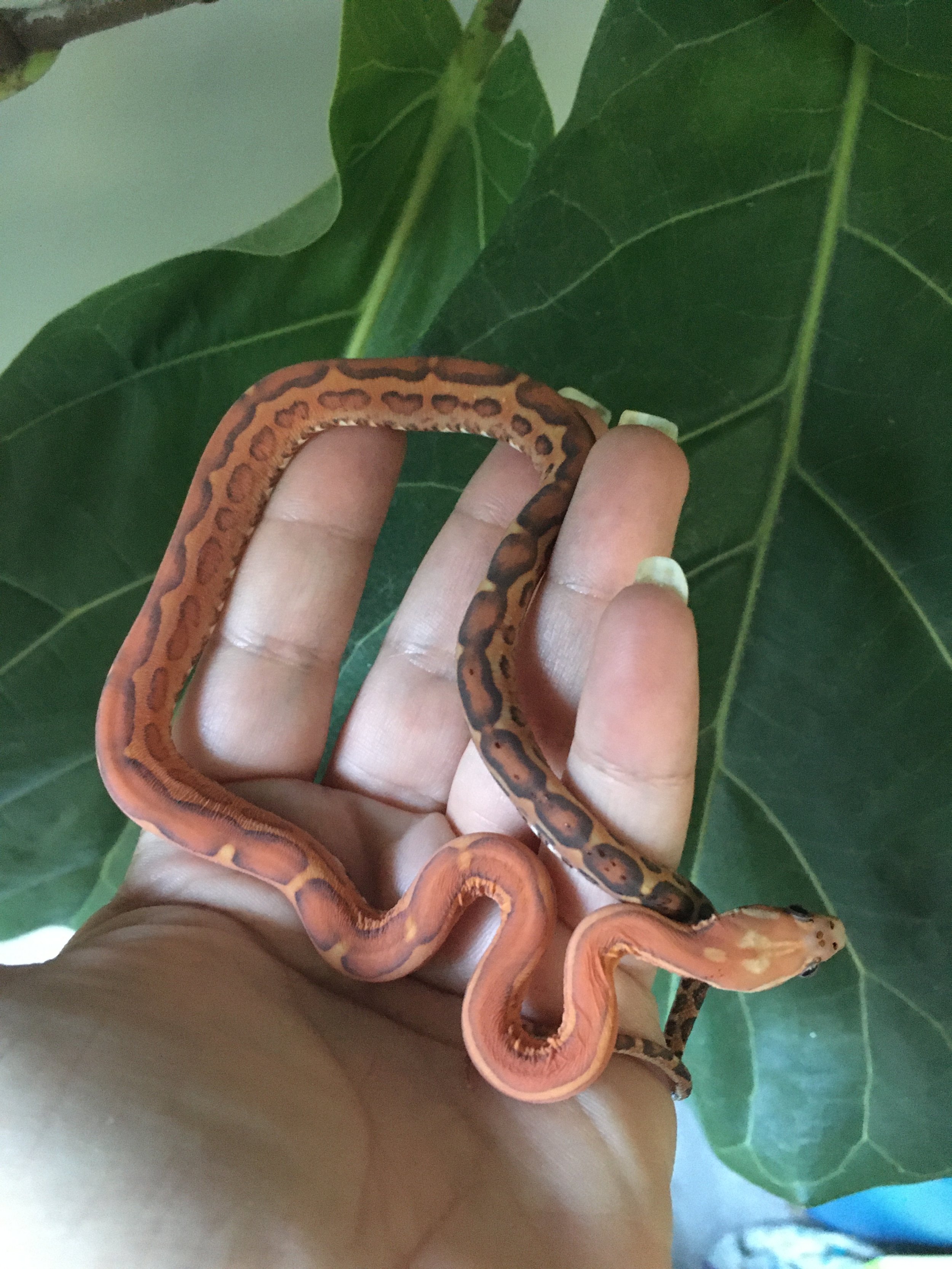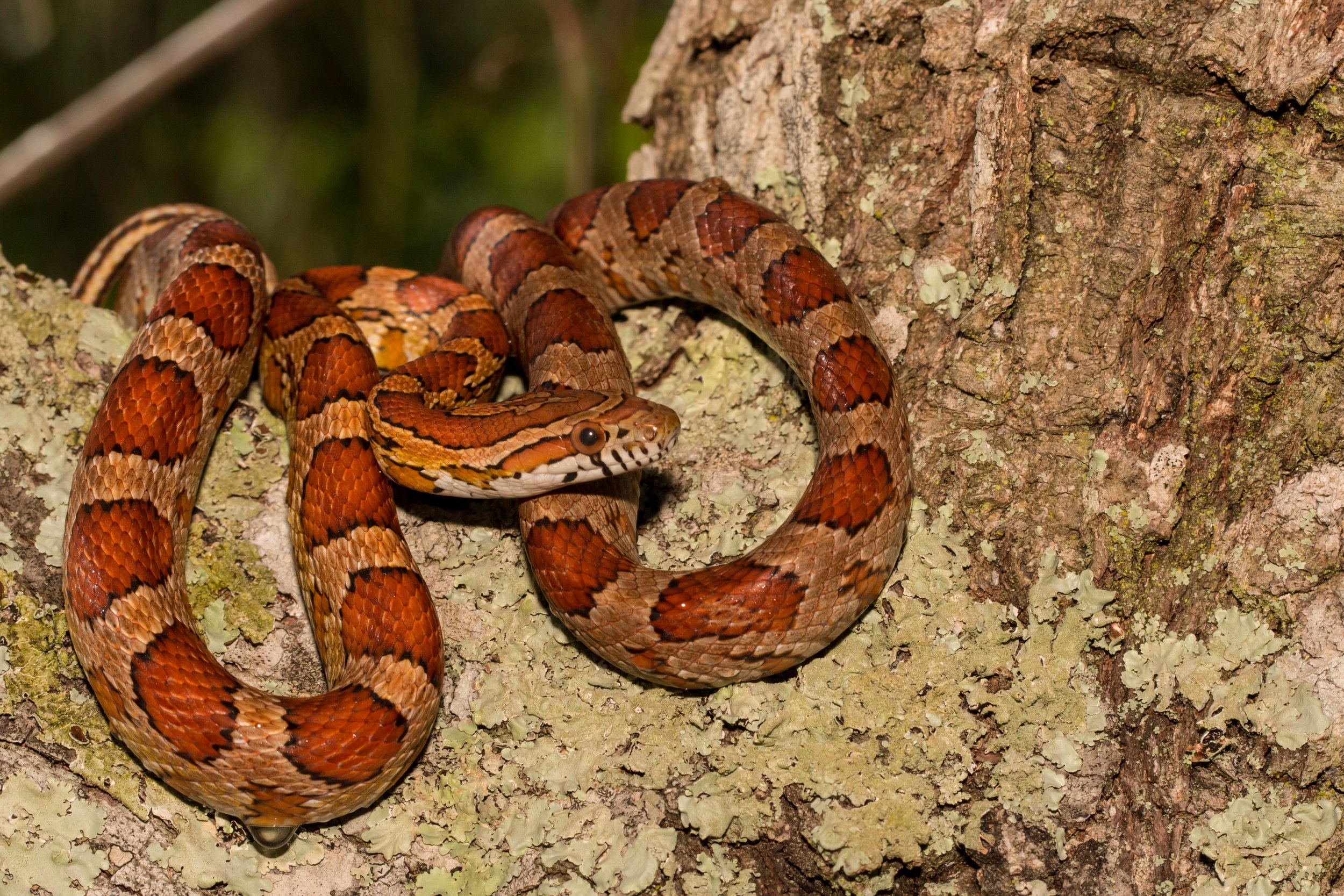Beginner Corn Snake Keepers: All Your Shed Questions Answered!
Congratulations on welcoming your new baby! Corn snakes are fantastic companions, known for their ease of care and entertaining interactions. Nevertheless, the shedding process in corn snakes often prompts numerous questions. In this guide, we'll delve into the intricacies of shedding, ensuring that you're well-informed and free from any lingering uncertainties.
How often should my corn snake shed?
Every corn snake grows at its own pace, influenced by factors such as age and dietary intake. Typically, younger snakes shed approximately every 4 to 6 weeks, while older ones shed less frequently, around every 8 to 12 weeks. However, it's perfectly normal for snakes to go longer between sheds, provided they continue to eat and eliminate waste regularly.
How will I know my snake is going to shed?
You can usually tell when your snake is about to shed by observing certain physical changes:
Dull Skin: Before shedding, your snake's skin will appear dull rather than shiny.
Cloudy Eyes: The snake's eyes will turn a milky blue color as it prepares to shed. This is often referred to as being "in blue" or "in shed."
Decreased Appetite: Many snakes will eat less or stop eating altogether in the days leading up to shedding.
Increased Restlessness: Some snakes may become more restless or active as they prepare to shed.
Keep an eye out for these signs, and you'll be able to anticipate when your snake is about to shed.
I Think My Corn Snake is Going to Shed, What Do I Do?
Sometimes you don’t even notice when your snake is in shed and can be surprised to find the shed in your snake’s enclosure one day. That’s no problem as long as none of it gets struck. If you do happen to notice that your snake is in shed, often from the cloudy eyes which is referred to as “in blue”, then you should do the following.
Provide Adequate Humidity: Increase the humidity in your snake's enclosure slightly. This helps soften the old skin, making it easier for your snake to shed. This can be done by adding water to a moisture-retaining substrate (such as soil, cocoa fiber or chips, or mulch). This method should be avoided if you are using aspen, but instead, you can make a humid hide by placing moist sphagnum moss into an enclosed hide.
Ensure Proper Hydration: Make sure your snake has access to clean, fresh water at all times. Proper hydration is essential for a smooth shed. Some snakes may soak in their water dish during the shedding process to aid in loosening the old skin.
Avoid Handling: While your snake is in the blue phase, it's best to minimize handling to reduce stress. Handling your snake during this time could disrupt the shedding process and potentially cause injury or tearing of the skin.
Monitor Behavior: Keep an eye on your snake's behavior during the shedding process. While some snakes may become more reclusive or less active, others may exhibit increased rubbing against rough surfaces to help remove the old skin. Ensure that there are no sharp objects in the enclosure that could cause injury during this rubbing behavior.
Provide a Hiding Spot: Offer a hiding spot in your snake's enclosure where it can retreat and feel secure during the shedding process. A snug hide box lined with damp moss or paper towels can create a humid microenvironment that aids in shedding.
Be Patient: Shedding can take several days to complete, so be patient and allow your snake to shed at its own pace. Avoid the temptation to assist with the shedding process as interfering can lead to complications.
By following these guidelines, you can help ensure that your corn snake has a smooth shedding experience and emerges with vibrant, healthy skin. If you have any concerns or notice any abnormalities during the shedding process, consult with a reptile veterinarian for advice and assistance.
How long does it take for a corn snake to shed?
The shedding process, also known as ecdysis, can vary in duration depending on factors such as age, health, and environmental conditions. Typically, a corn snake will spend several days in the shedding cycle, which consists of several stages:
Pre-Shedding Phase: Before entering the blue phase, corn snakes may exhibit changes in behavior and appearance. They may become less active, their colors may appear duller, and their eyes may develop a cloudy or milky appearance as they prepare to shed.
Blue Phase: This is the main shedding phase, characterized by the cloudy or opaque appearance of the snake's eyes. During this time, the snake's skin becomes loose as the new skin underneath develops. The duration of the blue phase can vary but usually lasts around 1-2 days.
Shedding Phase: After the blue phase, the snake will shed its old skin. This process typically takes another 1-2 days to complete as the snake wriggles out of its old skin, starting from the head and working its way down to the tail.
Post-Shedding Phase: Once the shedding is complete, the snake's new skin will be revealed, vibrant and fresh. It may take a few hours for the new skin to fully harden and for the snake's coloration to return to normal.
Overall, the entire shedding process usually lasts around 4-7 days, but individual snakes may vary. Factors such as temperature, humidity levels, and overall health can influence the duration of shedding. It's essential to monitor your corn snake closely during this time and provide appropriate care to ensure a smooth shedding process. If shedding takes significantly longer than usual or if you notice any difficulties or abnormalities, consult with a reptile veterinarian for guidance.
Can I hold my corn snake while it is in shed?
If you've removed your snake from its enclosure and observe that it's in shed or in the blue phase, there's no need for alarm. Nevertheless, it's wise to refrain from handling your snake during this period. Shedding impedes their vision, potentially heightening their stress levels. Moreover, some believe it might cause discomfort to the snake. Simply place your corn snake back into its enclosure or if you notice that they are going to shed avoid handling it.
Can I feed my snake while it is in shed?
Corn snakes are known for their hearty appetites, and many will continue to eat even during the shedding process. While your snake might opt out of a meal, there's a high probability it will eagerly accept one. Thus, it's advisable to offer food and gauge its response accordingly.
Help! My corn snake has stuck shed, what do I do?
If you notice that your corn snake has stuck shed, it's essential to address the issue promptly to prevent any complications. Here's what you can do:
Increase Humidity: Raise the humidity level in your snake's enclosure to help loosen the stuck shed. You can achieve this by adding water to its substrate, as long as you are using a substrate that won’t mold. You can also add a moist towel into the enclosure so your snake can slither through it or go under it or a humid hide. Ensure that there's a dry area for your snake to retreat to if needed.
Provide a Soaking Bath: Offer your snake a shallow soaking bath in lukewarm water. This can help soften the stuck shed, making it easier to remove. Be sure not to use water that is too hot or too deep, as this could stress or harm your snake.
Gentle Handling: If the stuck shed is on a larger area of your snake's body, you can gently assist in removing it. Use a damp cloth or your fingers to carefully loosen the shed skin, being cautious not to pull too forcefully or injure your snake and if it seems stuck don’t continue to pull because you can tear the fresh skin.
Monitor for Signs of Infection: After removing the stuck shed, keep an eye on the affected area for any signs of infection, such as redness, swelling, or discharge. If you notice any concerning symptoms, consult with a reptile veterinarian for further guidance and treatment.
Preventative Measures: To prevent future stuck shed, ensure that your snake's enclosure maintains proper humidity levels, provide a suitable shedding substrate, and offer regular opportunities for soaking. It can also help a lot to sprinkle a reptile multivitamin and a reptile probiotic to a mouse. Often the added nutrition helps with future sheds.
By taking these steps, you can help your corn snake safely and effectively remove stuck shed, promoting healthy skin and overall well-being.
And there you have it! You're now equipped with all the essentials about corn snake shedding, from what signs to watch for to how to handle it if things don't go smoothly. You're prepared for any situation that may arise.




